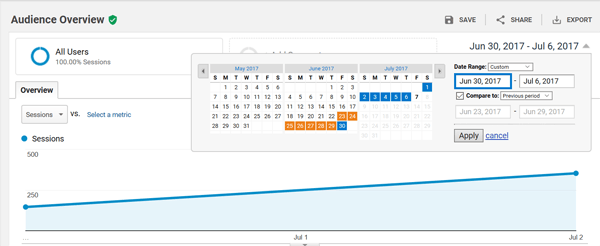4 Metrics that Prove a Website Redesign is Imminent

Design is in an ever changing state of flux, evolving with the fickle nature of consumer taste. Website design is no stranger to this evolution. The explosion of Internet usage among society in the past decade has meant that businesses no longer have a website simply for the sake of having a website. For many they are now significant revenue generators. As a byproduct, it is a constant challenge to make sure that the website stays up to date both in terms of content and design.
Making incremental design changes or updates to a website is a necessity in prolonging the lifespan of your current design iteration. However, there will come a time when you need to cut your losses and completely redesign the site. The problem is that redesigning a website can be a time intensive process or, if you use a Web design agency, creating an awesome site can cost a pretty penny. So how can you be sure the time has come? How can you use metrics to make data-driven decisions (in this case taking the plunge into full website redesign)?
Google Analytics
First of all, if you have a website but have not linked up a Google Analytics account then please do so straight away. The data cannot be tracked and stored retrospectively so you want your GA account to be active throughout the lifecycle of your website. There are tools out there such as Hot Jar that will provide a different type of data, however we will concentrate on using data from GA considering that it's free, super easy to set up and the most widely used analytics platform of its kind.
Secondly, you will want to get familiar with how to compare data against a certain period whether that be last week, last month, or last year. Do this by clicking on the date range in the top right hand corner, select 'compare to', and choose the period in question. 
Finally, before we start it is important to note that these metrics are indicative. They will require some level of judgement from your side and we would advise using all of them combined to come to your decision.
1. Increasing Bounce Rates
Ahh possibly the most well-known metric on Google Analytics! Yes an increasing bounce rate can indicate that your website's design needs an overhaul because it is failing to engage customers in those first critical moments. Pro tip: dig a little deeper into the bounce rates for various channels because this particular metric can be affected by a lot of things. For example:
- Increased bounce rates for traffic from social media may well point to a lack of consistency in your brand messaging.
- Increased bounce rates for traffic from search engines might indicate that you are actively targeting keywords that are not relevant enough.
If you do dig deeper and find that your bounce rate is increasing across the board (and not simply skewed by a drastic increase via one channel) then take note, for some reason your website is not engaging users and this could be down to the fact that the design is outdated.
2. Behavior Flow (a.k.a. User Flow)
If bounce rates are the receptionists at the front of a hotel, the behavior flow metrics are the internal signage helping you find your room. You want your website to allow easy navigation through a clear user interface. In plain English? If you look at your behavior flow and notice that visitors are leaving your website from certain key pages or that the amount of exits is increasing, it could be the start of a trend. If your 'exit pages' are widespread then your users are likely to be leaving because of:
- Poor user experience
- Confusing menu structures or lack of call to actions
- Mobile responsive issues
All issues that can be solved through a website redesign.
3. Decreasing Average Time on Page
Another metric that can show your website is need of a facelift. Users are growing ever more susceptible to the visual experience that websites offer, and ever more demanding. Whilst you want your website to funnel users toward a conversion, which would likely involve visiting multiple pages, you also want users to be engaged by each page. A decreasing average time spent on page coupled with an increasing number of exit pages or 'drop offs' should raise warning flags. Your website visitors are clearly needing more, this may well be in the form of more engaging content but do not discount a drop in overall user experience, affected by design.
4. Dropping Conversion Rates
This does require slightly more advanced set up within your GA account but trust us, you want to know this data. You don't want to necessarily look at the quantity of conversions on your website because this data can be significantly affected by marketing activity. Instead look at the conversion rate, i.e what percentage of total visitors are completing a goal.
If you notice that over time your conversion rate is slipping and there have not been any other major external changes then this can be a powerful sign that your website's design just ain't cutting it anymore. Great website design encourages your users to fulfil actions on the site and consumers are super sensitive to this. It may be that a five-step payment process should be replaced with a single sign in and one-click purchase, or that the design as a whole has fallen behind competitors.
Making the Call
In the end, if you are thinking about a website redesign then it is likely that your website already needs one. These metrics should be the closing argument that justifies the investment in redesigning your site. Use the data available to provide figures that will back up the more emotive reasoning. Talk to your clients, colleagues and friends and ask for an honest review of the website. The data is then there to help you make the decision.
Finally, as is often the case with significant decisions the hardest part is often just getting on with it! If the feedback is as expected, the data reinforces the argument and you personally believe that it is the right thing to do, the only item left on the agenda is giving the go ahead.  About the Author
About the Author
Simon Ensor is the Managing Director of Yellowball, a digital marketing agency in London specialising in Web Design, SEO, Social Media and Email Marketing.

Subscribe to Our Newsletter!
Latest in Web Design








